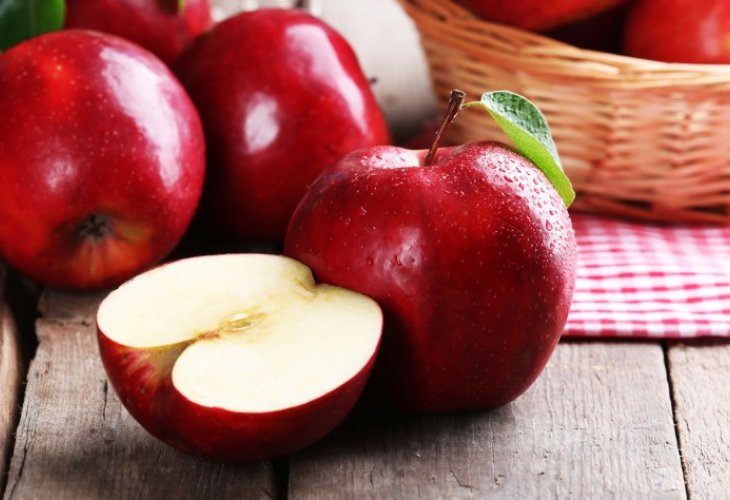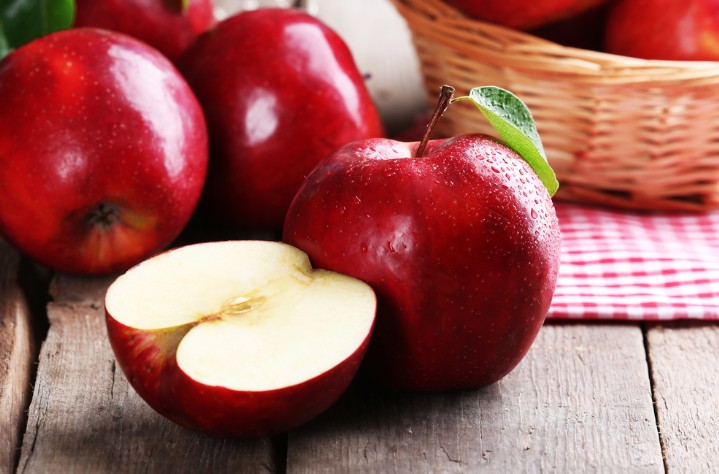What is the glossy coating on apples? And is it kosher?
While we could enjoy apples without shmita concerns until now, we must be extra cautious going forward. Also: What is the substance added to apples to make them look beautiful and shiny? And is it kosher?

In the past year, the apples that were marketed were still from the sixth year harvest. However, now in the eighth year, we need to check: what is the origin of the apple, is it produced in Israel, is it sanctified with the holiness of the seventh year and grown in a permissible manner, or perhaps it is imported (which are imported regardless of the shmita year, as imported apples from Washington, France, Italy and Greece are always available).
Israel imports apples of all known varieties: Smith, Hermon, Gala (sweet reddish), Anna, Golden (Jonathan), and of course the prestigious Pink Lady, also called Pink Crispy, a type of new variety development, and very tasty. Apple merchants tell us that from their experience, the preference between types of apples varies according to country of origin. Those from Middle Eastern countries prefer sweet apples, while those from former Soviet Union countries prefer green and sour apples. The demand for green apples is higher, also because they are more suitable for the confectionery industry, as they do not brown and break down in heat.
However, there are many consumption differences between apple customers in Israel, who check the quality of the fruit by how shiny and glossy it is, compared to their counterparts abroad who prefer apples with a more matte and natural appearance. But gradually imported apples are also taking on a glossy appearance, so we need to check what the source of this shine is, and what material it is made from.
Indeed, there are additional reasons that cause apple marketers to wrap apples in a shiny layer. For example - from the time of picking until the customer consumes the fruit, some time passes causing the liquid in the fruit to evaporate; the apple loses up to ten percent of the liquid inside it. This causes the fruit to look withered, and it loses vitamin C. In addition, the washing processes the fruit undergoes cause it to lose its natural protective layer and make it exposed to various pests and fungi. Therefore, growers have developed an artificial method that will successfully wrap the fruit and protect it from moisture loss, while being breathable and ventilated. There are protective layers called oxidized polyethylene, which is a type of oxidized plastic, or the Comoron Yenden method, which is also a chemically-based compound. Although these materials don't have special kashrut problems, health ministries around the world limit their use only to citrus fruits, whose peels are not eaten anyway. However, for other fruits with edible peels, the preference is not to use them but rather more natural materials, such as shellac or wax.

Shellac is a sticky plastic material, usually red in color, used for coating foods and especially candies, and it is very common in the world. Shellac is produced by small insects, about a millimeter in size, that grow on trees in India or Thailand. As they suck the tree sap, they add fats and chemicals from their bodies. The shellac secretion is made from a special gland in their skin. By the way - the sticky material serves them as glue to hold onto the tree and as a place to lay eggs, and after hardening as protection against pests. From a halachic and scientific perspective, the secreted material is a new substance created inside the bodies of impure insects forbidden for consumption and is not tree resin at all. This brings us to the question: Is shellac included in the category of "anything that comes from the impure is impure," and if so, is forbidden for consumption and cannot be used as a wrapping for fruit? Or perhaps the process of shellac creation is identical to that of honey, where flower nectar is digested and changed inside the bee and comes out in a different version as honey. The permission is not just for bees, as the Shulchan Aruch permitted not only bee honey, but also wasp and other insect honey, so how is shellac different?
But there are additional kashrut questions, because after the stick lac layer is formed on the tree, the sticky material is scraped off and heated to about 180 degrees Celsius to clean it, which poses a kashrut problem since the insect fat and larvae are cooked with the sticky liquid. However, if we know for certain that the liquid has been completely cleaned, the problem would be solved, as even bee legs were permitted by the Shulchan Aruch to be heated with honey to clean it. But the problem is that some claim that shellac always contains insect residues, while those who permit it claim that shellac is completely clean.
There is another problem: after heating, the stick lac goes through hardening and grinding into flakes, and to use it again it needs to be re-dissolved in alcohol, which is not necessarily kosher. The same problem exists in another method that extracts shellac by dissolving it in alcohol, rather than by heating.
However, in shellac made without color, most of the time the shellac undergoes processing with spoiling materials such as passing shellac through activated carbon, or processing it with washing soda (a type of bleach), so there is more reason to permit it because the material is spoiled during processing.
So is shellac permitted? The opinion of Rabbi Moshe Feinstein zt"l is known to have ruled leniently, while Rabbi Yosef Shalom Elyashiv took a stricter approach, but allowed the marketing of apples wrapped in shellac on condition that signs be placed asking customers to peel the fruit, even though it is possible that someone might eat the fruit without peeling. However, today the Badatz, as well as other mehadrin kashrut bodies, do not approve the use of shellac, and have developed other coatings that are mehadrin kosher. But with imported apples, we must be extra careful about what the coating is made of, and make sure they have kosher certification, because peeling is not always effective.

